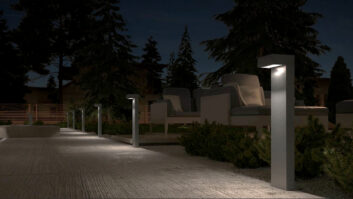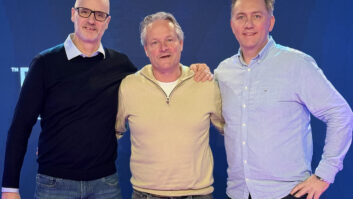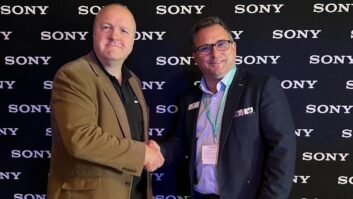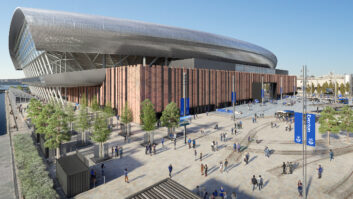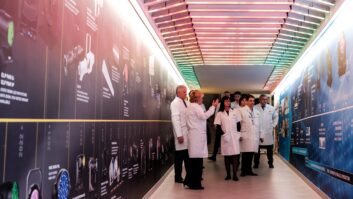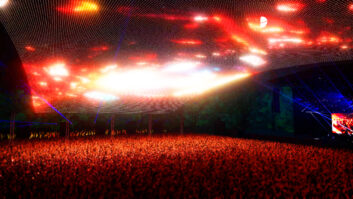With the ABTT Theatre Show approaching, lighting designer Michael Odam discusses the challenges of working in theatres and looks at the way new technology is having an impact on design.
The technology of theatre lighting design is developing all the time and allowing for stunning visual effects, scene changes and wow factor. Despite digital solutions facilitating the demand to push boundaries and achieve the highest production values, a team of lighting experts plus a fleet of electricians will work around the clock during set up on a major West End musical production (below).
Computer-controlled lighting desks let us control automated lighting fixtures, which can have up to 30 control parameters each, hundreds of dimmers for the conventional fixtures, video projectors, smoke and haze machines along with their associated fans and endless special fixtures built into the scenery.
In a single cue we can have lights fading up or down to many different levels; some could be doing a live colour change or a live move, while other units could be pre-setting into a new position, colour or gobo for the next cue. That cue could also be triggering a sequence of lighting cues, smoke effects or projection. All from one button push.
Many challenges face a lighting designer in a theatre environment, but perhaps the biggest of all is to create a blackout. So much lighting spills over from the orchestra pit which, combined with the aisle lighting, emergency exit signs, secondary lighting in the auditorium, all make it almost impossible to create a total blackout. Stage scenery is often made from highly reflective material adding to the lighting designer’s challenges.
Auditorium décor can also cause the theatre lighting designer some problems and distract from the environment being created on stage. Flare from lights at front of house create a bright lighting state and can cause the auditorium to glow brightly, often due to the flare reflecting on light-coloured walls or ceilings.
Where possible, we’ll add top hats to lighting fixtures to mask the lens from the audience. Unfortunately theatrical lights have many apertures, heat vents, fan housings, shutter assemblies, where small amounts of spill escape from the unit. If the unit is rigged close to a light-coloured wall then this spill is very distracting. Heatproof tape can be used to block the offending spill.
The air conditioning control can give the lighting designer cause for concern. In particular on musical productions haze is used to create atmospheric effects along with smoke and dry ice. Getting the haze, smoke or dry ice to appear on stage at the right moment and to be there for the right amount of time is quite a challenge, battling against backstage draughts and auditorium air con systems. Instead of a calm lake of dry ice on stage a tidal wave of smoke rushes towards and fills the orchestra pit.
Rigging of the theatrical lighting fixtures in an auditorium is often a time- and labour-consuming exercise. The weight of a modern automated fixture is approximately 35kg and there are many venues in the UK that have the circle rail lighting position reinforced to take the point loading of a projector. Once all the units are rigged, accessing them to focus both the conventional fixtures and maintain them when lamps fail is a slow job with ladders trying to reach the fixture you need, without moving the focus of the adjacent ones.
LED fixtures are making a big impact on our designs, mainly on stage and in effects. Soon they will be finding their way downstage of the safety curtain and onto the auditorium lighting positions with the development of zoom profile LED spots. In years to come, power and data distribution will have replaced the large back stage dimmer rooms as the LED fixtures replace most conventional fixtures. Automated units, video projection and powerful computer control systems will continue to be used.
Getting a blackout state will still be as hard as it is now.
Michael Odam is a freelance lighting designer
To learn about the latest in theatre technology and to talk to experts in this specialist field, visit the ABTT Theatre Show, which runs in The Royal Horticultural Halls, Westminster on 15-16 June.
